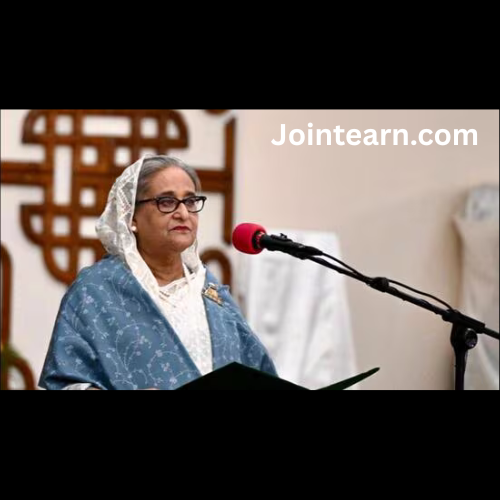New Delhi: In a chilling reconstruction of the events leading up to Monday’s deadly Red Fort blast, the Delhi Police have pieced together the movements of Dr Umar Nabi, the prime accused in the explosion that killed 13 people and injured over two dozen others. CCTV footage from over 50 locations, along with toll plaza data, GPS traces, and mobile tower information, reveals a calm, deliberate journey from Haryana into Delhi, punctuated by strategic halts, overnight stays in his vehicle, and careful navigation through the capital, apparently to avoid detection.
According to police sources, Dr Nabi left Faridabad early on Monday morning, traveling along the Delhi-Mumbai Expressway. CCTV cameras first captured his vehicle, a white Hyundai i20, leaving the vicinity of Asian Hospital around 7:30 am. From there, he crossed the Badarpur toll plaza at 8:13 am, entering Delhi and initiating a zigzag route through the city’s southeastern, eastern, central, and northwest districts.
Investigators say Umar’s movements suggest meticulous planning. Rather than taking major arterial roads, he preferred less crowded streets, occasionally stopping at small roadside eateries and mosques. “He appeared calm, not panicked,” a police source said. Footage showed him halting at a dhaba for breakfast, then visiting a mosque near Asaf Ali Road, close to the Ramlila Maidan, where he spent approximately three hours. At each stop, he appeared deliberate, engaging in ordinary activities such as eating or offering prayers, creating an impression of normalcy.
Throughout his journey, Umar made multiple loops across Delhi. He moved through Okhla and the industrial belt, passed Connaught Place, entered east Delhi, and later navigated central Delhi’s Ring Road. At midday, he was again seen in northwest Delhi’s Ashok Vihar, where he stopped at another roadside eatery. This pattern of movement, according to police, could have been an attempt to study crowd movements, assess security presence, or evade surveillance cameras.
The night before the blast, Umar reportedly stayed in his car at a location along the expressway, taking precautions to avoid detection. Police said he made strategic stops at small eateries and mosques, avoided major towns, and appeared to follow a preplanned route with calculated entry and exit points. These movements underscore a high degree of preparation and an intent to conceal his activities while moving closer to the intended target.
On the day of the blast, Umar’s vehicle entered the Red Fort parking area near Sunehri Masjid at 3:19 pm, remaining stationary for around three hours. CCTV footage indicates that he stayed quietly among other vehicles, blending in with ordinary traffic. At approximately 6:22 pm, the car began moving toward the Red Fort Metro Station side, and just half an hour later, at 6:52 pm, the vehicle exploded. The blast was captured on traffic surveillance cameras, showing a slow-moving white car suddenly erupting into flames, sending debris across the road and sparking panic among commuters and visitors.
The meticulous reconstruction of Umar’s route was enabled by the integration of multiple surveillance sources, including over 50 CCTV cameras along highways and within Delhi, GPS traces, toll data, and mobile tower information. Police officials noted that the timeline, hour by hour, demonstrates a pattern of calculated movements designed to avoid detection and ensure maximum impact at the Red Fort location.
Investigators also highlighted Umar’s background, describing him as an academically accomplished professional who allegedly became radicalized over the past two years. Authorities reported that he had joined several suspected extremist messaging groups, which may have influenced his motivations and planning.
Confirmation of Umar’s involvement came through DNA testing conducted on remains collected from the blast site. Samples were compared with DNA provided by his mother, confirming that he was driving the Hyundai i20 at the time of the explosion. “The DNA results confirm that it was indeed Umar who was behind the wheel of the fateful vehicle,” a police source said.
The detailed investigation has also revealed stopovers in Firozpur Jhirka, Haryana, and multiple strategic routes through the capital to avoid crowded areas. Authorities are examining his phone activity, believing that he may have received instructions or coordinated with associates before proceeding toward the Red Fort.
This meticulous reconstruction has provided authorities with critical insight into how the blast was planned and executed. It underscores the extent of preparation and deliberate strategy involved, and highlights the need for enhanced surveillance, monitoring of suspicious activities, and rapid intelligence sharing to prevent such incidents in the future.
The ongoing probe involves multiple agencies, including the Delhi Police, Jammu and Kashmir Police, and central intelligence units, working together to map Umar’s movements, track his associates, and understand the broader network behind the attack. Investigators are also examining the possibility that the route and stopovers were chosen to minimize risk of detection and to test local security responses, revealing a sophisticated understanding of urban dynamics.
The tragedy at the Red Fort has not only exposed vulnerabilities in public security during high-footfall hours but also raised questions about how a single individual with careful planning can exploit urban spaces to carry out deadly attacks. The reconstruction from CCTV footage provides a rare, detailed account of the precision and deliberation with which Umar executed his plan, highlighting the challenges faced by law enforcement in anticipating and preventing such incidents.
As the investigation continues, police are urging the public to cooperate with authorities, particularly in providing information about unusual movements or activities observed in public areas. The case remains a critical focus for central agencies tasked with preventing terror-related activities in the national capital.


Leave a Reply